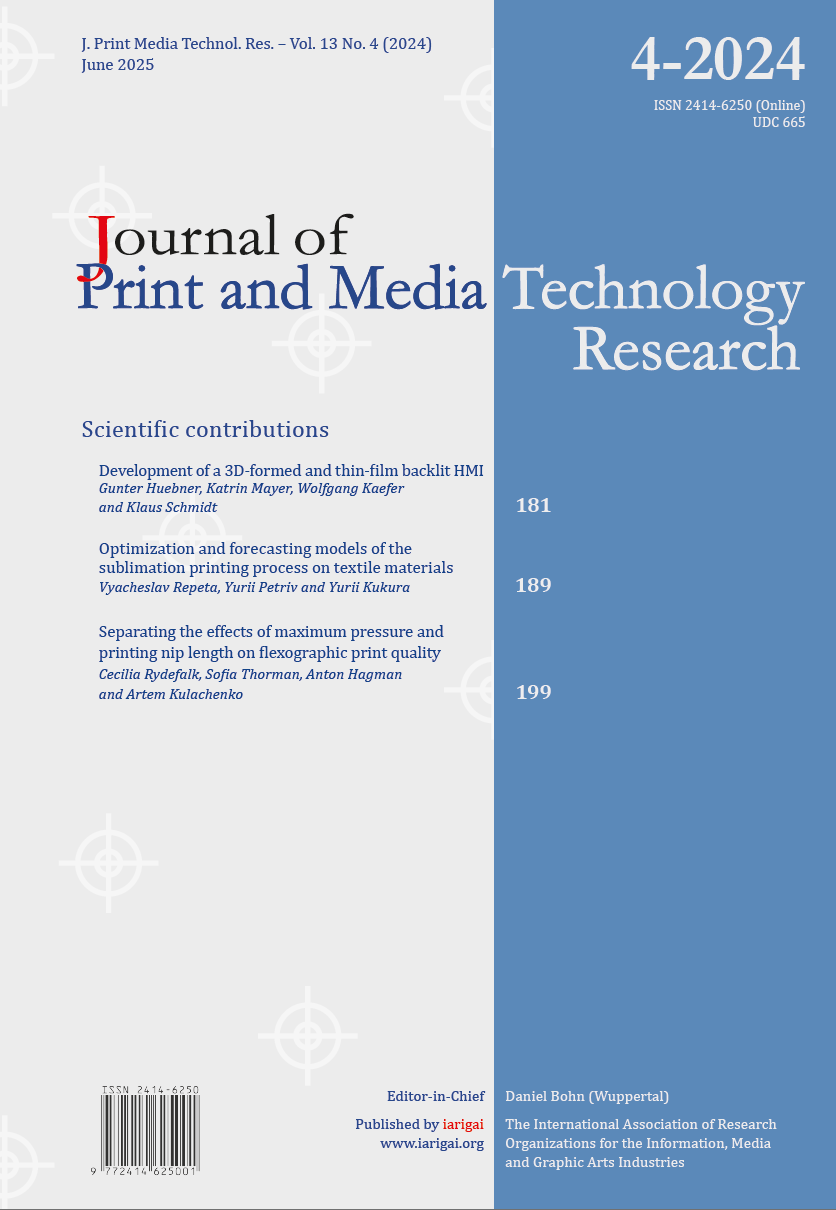Optimization and forecasting models of the sublimation printing process on textile materials
Main Article Content
Abstract
The paper presents the results of the analysis of the sublimation printing process on fabrics by the Taguchi method and forecasting the process quality using the fuzz y logic principles. Imprints obtained in different technological modes and on textiles with different absorbency. Based on the results of the analysis, it was established that the temperature and the material absorption capacity have the greatest influence on the optical density of imprints. Using the Taguchi method it was determined that the optimal parameters of the printing process to achieve high optical density are the material moving speed of 18 m/h, the temperature of the printing process of 215 °C and the textile absorption of 19 mm. Taking into account that the influence of the material moving speed in the range of 18–32 m/h showed to be insignificant, two factors were selected to forecast the process quality: the temperature and the material absorption capacity. The formed fuzz y knowledge base made it possible to construct forecasting models of the influence of these two factors on CMYK ink printing process quality. The comparison of the simulated values of optical density with the values that were obtained experimentally shows the adequacy of the models for CMK colours. Significantly higher optical density deviations are observed for the yellow colour (Y), which indicates a less controlled thermal transferprocess. This is also indicated by the value of the signal-to-noise ratio, which is minimal for yellow.
Article Details

This work is licensed under a Creative Commons Attribution-NonCommercial 4.0 International License.
